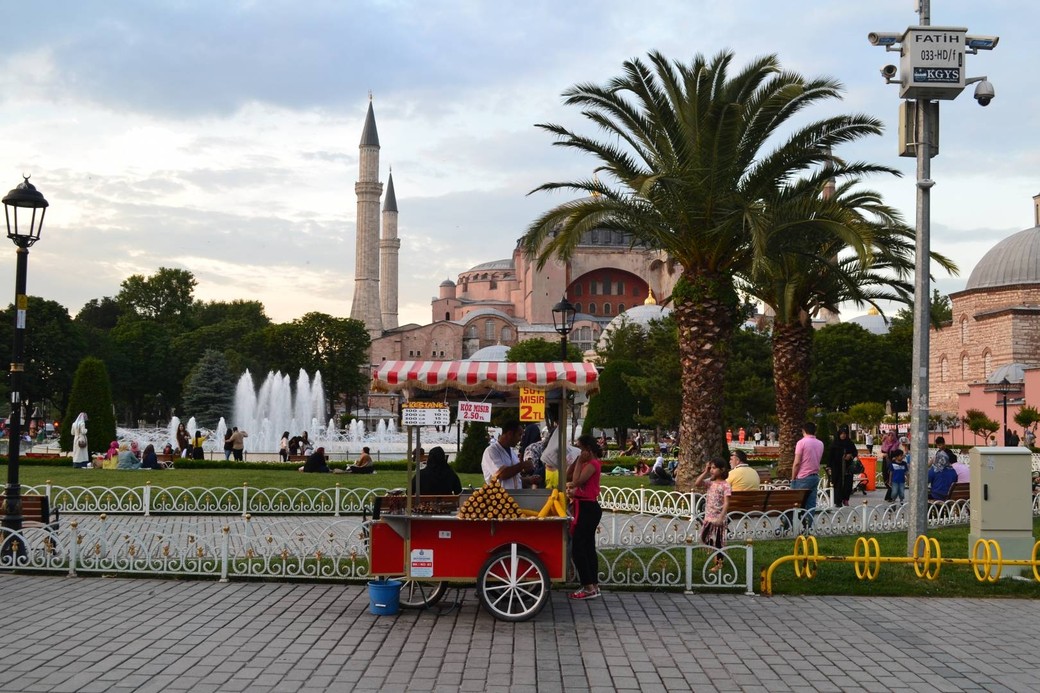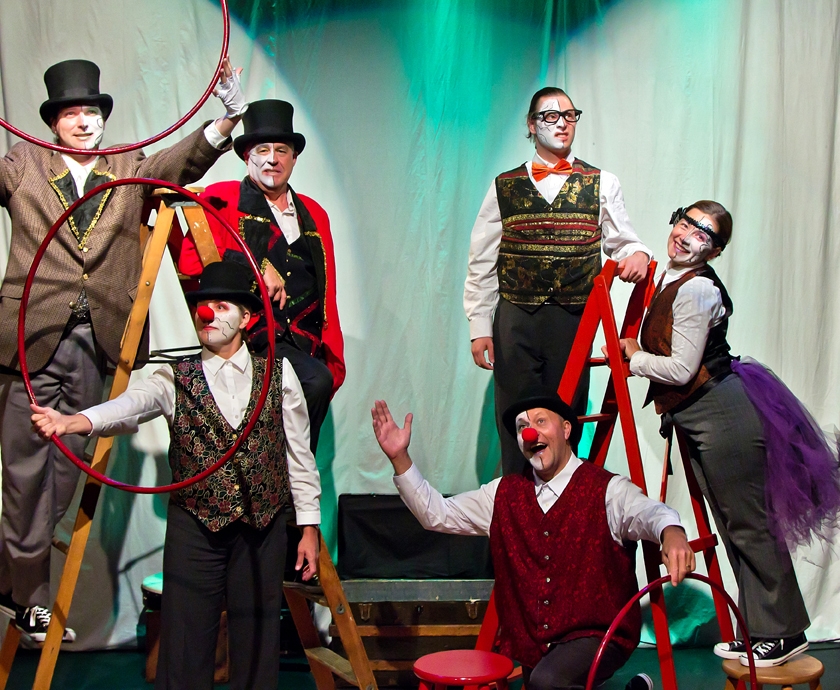
Across Two Continents: Visiting the Ancient Byzantine Capital
All photos taken by Isabel Payne.
Dating back to as early as 660BC, Istanbul has a very colourful palette of cultures and history. The city we know today has undergone huge transformations over time. Founded as Byzantium in 660BC, and then later renamed Constantinople in 330AD, the city was the imperial capital for four empires across roughly 16 centuries until the foundation of the Turkish Republic in 1923 moved the capital to Ankara. I recently had the opportunity to visit this ancient city with Turkish Airlines to explore what it has to offer. The city itself proudly retains much of its colourful history, but has also constructed the modern era alongside the old. The result is three sections of the city that almost allows you to walk through time itself.
What to see:

Istanbul is literally packed full of fascinating places to visit. From magnificent palaces to hectic markets, there's a little something of everything to suit everyone's interests. The sightseeing began starting right in front of our hotel, the Sari Konak Oteli, which was conveniently located steps away from famous buildings like the Hagia Sofia (pronounced Ayasofya) and the famous Blue Mosque. The Sari Konak gave me an immediate sense of comfort and welcoming, with spacious boutique rooms and a gorgeous flower covered rooftop terrace. Small shops and cafes lined the streets away from the hotel and up to the Hippodrome.

Built in 203AD, the Hippodrome of Constantinople was once the social centre of what is now Istanbul. At its prime, the Hippodrome had the capacity to seat 100,000 spectators to watch horse and chariot racing. While the Hippodrome itself fell to ruins in the 1400s, it still remains a social centre of modern Istanbul with a few historical gems surviving the centuries. Now called Sultanahmet Square, the area connects multiple historical sites into one convenient location. Several artefacts in the Hippodrome have survived the pillaging and tests of time. The Obelisk of Theodosius I is among the oldest of artefacts still on display. The red granite obelisk was originally erected in Cairo by Pharaoh Thutmose II between 1479-1425 BC and initially stood at 30 metres tall. In 357 AD, Roman emperor Constantius II had the obelisk moved to Constantinople and had it re-erected in the Hippodrome. Today, only around 19 metres of the obelisk survives in remarkably good condition.
The square is also home to both the Ayasofya (or known in English as the Hagia Sofia) and the Sultan Ahmet Mosque (or Blue Mosque). Literally translating to “holy wisdom”, the Hagia Sofia that currently stands in Istanbul is the third iteration of it to have been built. The church was built in 532 by Emperor Justinian I who, sick of the previous churches in the city being destroyed, decided to build a massive new church that would put its predecessors to shame. After the Ottoman empire had conquered the city, minarets were added and the church was altered to be the first imperial mosque of Istanbul in 1453 and continued to function as such until 1935 when it was finally transformed instead into a museum. Now, the Hagia Sofia is the only place in the world where you can see the artworks of two religions contained in one place.
Across the street, the Sultan Ahmet Mosque offers a gorgeous view of ottoman architecture. See thousands of gorgeous Iznik tiles lining the interior, or stick around the area to hear the call to prayer being announced from the mosque’s six minarets. While it’s not the biggest mosque in the city, it is arguably one of the most beautiful to visit. Just be sure to check the dress code ahead of time.
A short walk away from the Sultan Ahmet square leads to the Basilica Cistern, an ancient cistern filled with marble columns that once supported Pagan temples. Right next to it also stands a segment of the Valens Aqueduct, which was once over 900 meters long. From there, a quick tram ride can take you to the gorgeous Topkapi Palace, an Ottoman palace built for the sultan and his family in 1453. Be prepared to spend several hours there marvelling at the gorgeous architecture and well-kept gardens. Further up the hill hosts a number of gorgeous attractions, including the Galata tower, the Modern Art Museum, and Taksim Square.
What to eat:

With its proximity to Eastern Europe and the Middle East, it's not surprising that Turkish cuisine has become a delicious mix of many cultures. Cuisine in Istanbul maintains much of what was eaten from the Ottoman era. For meat lovers, try kofte or freshly caught fish. Begin your meal with fresh hummus or some acili ezme, a spicy tomato dip similar to bruschetta. Appetizers are generally served with freshly made flat breads that smell and taste like a million dollars. Follow up with a warm lentil soup or fresh calamari, however don't get over zealous on the appetizers– you'll want to leave room for the main course! Mains can vary depending on the restaurant. Be sure to try Manti, a dish often called Turkish ravioli, and Pide, a canoe-shaped dish very similar to pizza.
Turkish desserts are especially lovely. Feast on freshly made Baklava or sample the many flavours of Lokum, or Turkish delight. For a frosty desert, try Dondurma (otherwise known as Turkish ice cream) which is noticeably stickier and chewier than ice cream of the western variety. Ornately dressed Dondurma vendors can be spotted all around the city flipping around large amount of Dondurma with thin metal rods. One of my absolute favourite desserts to eat was Künefe, a buttery, sweet, cheese-filled treat that is best eaten when warm and fresh. Head into Hafiz Mustafa for freshly made Künefe topped with pistachio or Dondurma, or try some of their many puddings including Tavuk gö?sü, a sweet rice pudding made with chicken breast (yes, you read that right).
Many restaurants in the city offer stunning views with many rooftop terraces. Seven Hills Restaurant boasts one of the most beautiful views in the city. There you can dine while watching the sunset over the Bosphorus, or if architecture is more your thing, sit on the other side of the rooftop terrace for views of the Blue Mosque and the Hagia Sofia. For those who want to be close to the water, Villa Bosphorus gives you romantic views of the European side of Istanbul. The restaurant sits right on the edge of the Bosphorus and offers a selection of authentic Turkish cuisine to enjoy while dining next to a breathtaking view.
Where to shop:

Istanbul has thousands of small shops packed with colourful lanterns, detailed pottery and lots of Turkish snacks. A visit to the Grand Bazaar gives you a little taste of everything. With over 4,000 shops, the Grand Bazaar is one of the world’s oldest and largest covered markets in the world. Get your bargaining game on and be prepared to face pushy shop keepers selling everything from carpets to gold jewellery. If cooking is more your thing, the Spice Market boasts an insane amount of spices, including some not normally found in western markets. There you can sample some pomegranate tea or purchase some sumac or a bag of kebab spice to bring home for marinades. If you’re looking for a more European shopping experience, Istiklal Caddesi is one of the most famous shopping streets in the city, lined with great coffee shops, popular clothing brands, and art galleries. The street goes on for 1.4 km and leads from the famous Galata tower up to Taksim Square.
From the Government of Canada: While there is no nationwide travel advisory in place for people travelling to Turkey, it is recommended that you exercise a high degree of caution due to crime, the threat of terrorist attacks and ongoing demonstrations throughout the country.













